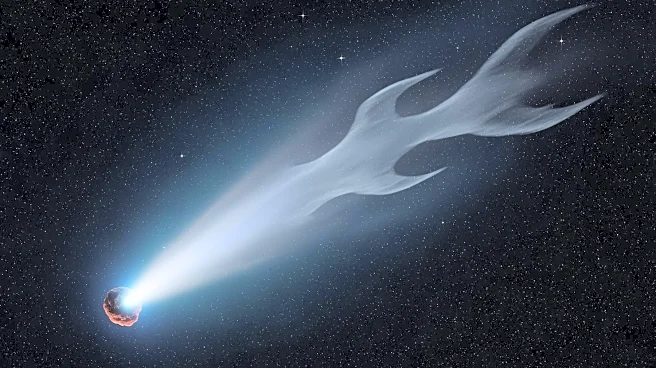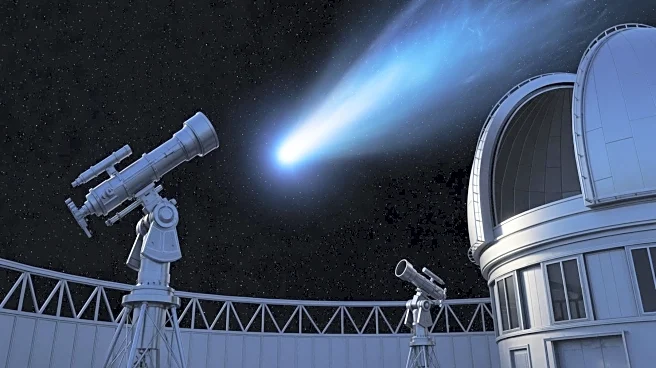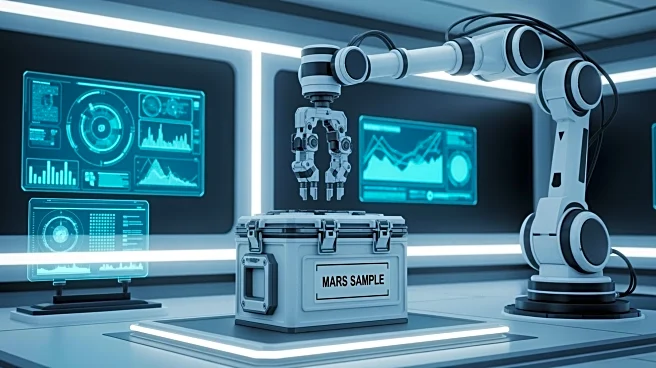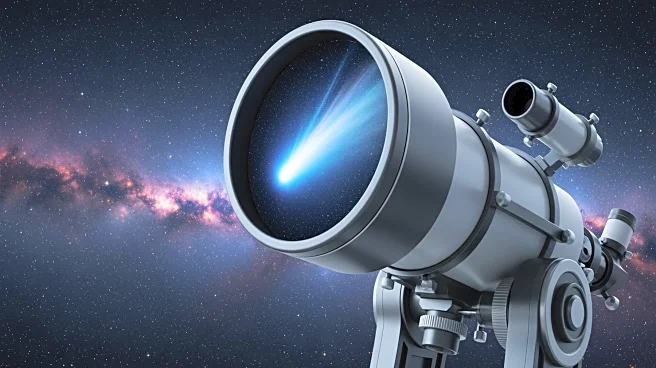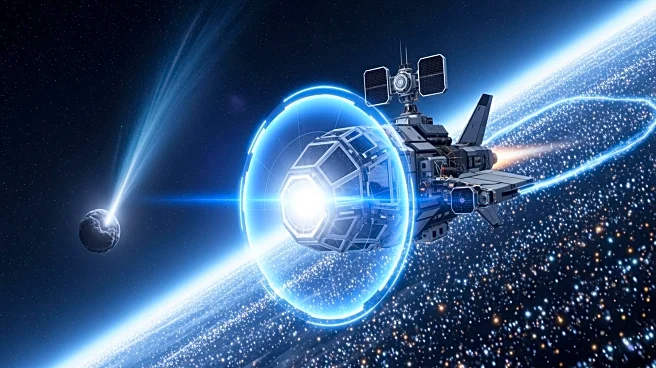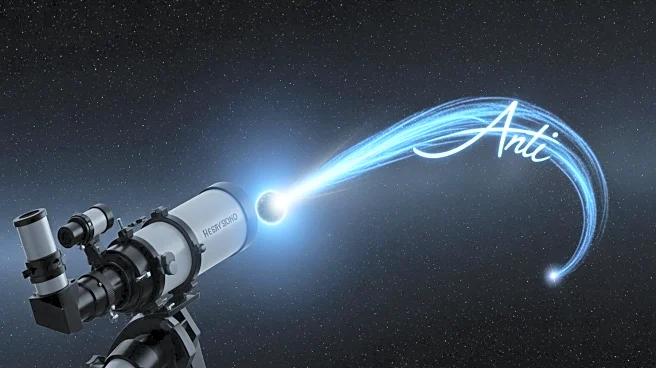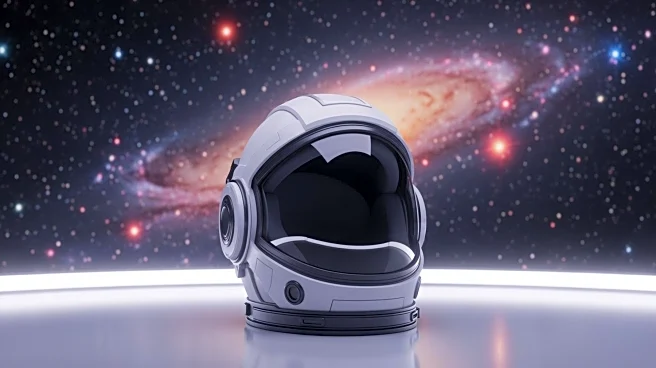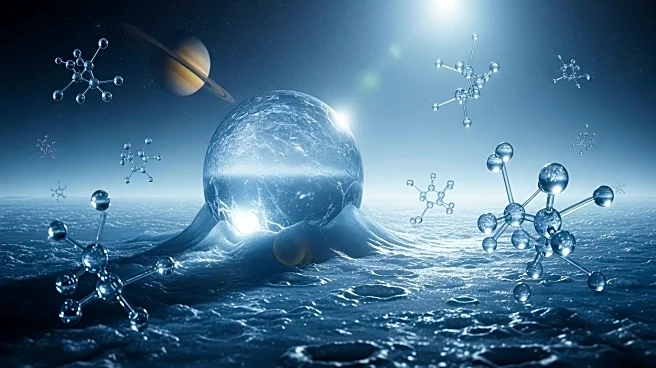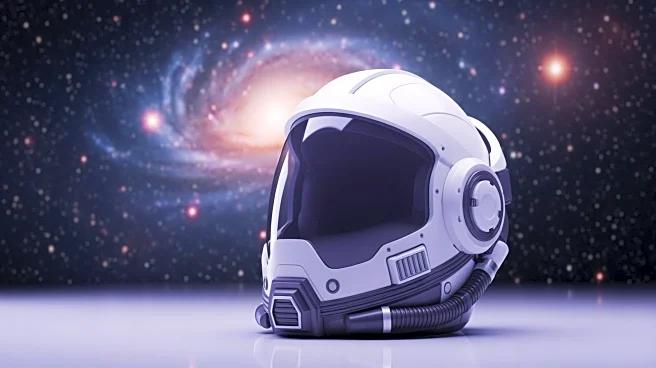What's Happening?
NASA's Europa Clipper spacecraft, designed to study Jupiter's icy moon, may soon encounter the ion tail of an interstellar comet, 3I/ATLAS. This potential event, predicted to occur between October 30 and
November 6, offers scientists a unique opportunity to sample material from a comet originating outside our solar system. Researchers Samuel Grant from the Finnish Meteorological Institute and Geraint Jones of the European Space Agency have described the event as safe and scientifically valuable. The encounter depends on several variables, including the direction and strength of the solar wind and the comet's activity level, which peaks around October 29. The Europa Clipper's instruments, built to study Jupiter's magnetic field, could detect ions from a different solar system if the encounter occurs.
Why It's Important?
The potential encounter with the comet's ion tail is significant as it could provide unprecedented data on interstellar comets and the star systems that formed them. This event represents a rare chance to sample material from a different part of the galaxy, offering insights into the composition and behavior of cometary bodies. Such data could enhance our understanding of the solar wind's interaction with cometary ions, which include heavier species like water-group ions. The Europa Clipper's ability to detect these ions could lead to breakthroughs in cometary science and solar system exploration.
What's Next?
If the encounter occurs, NASA scientists will decide whether to conduct measurements using the Europa Clipper's instruments. The spacecraft's findings could contribute to future missions, such as ESA's Comet Interceptor, set to launch in 2029 to directly fly through the coma and tail of a pristine comet. The success of this prediction could also bolster efforts to track cometary tail crossings across vast cosmic distances, enhancing our ability to study interstellar objects.
Beyond the Headlines
The event highlights the growing capability of scientists to predict and study cosmic phenomena across vast distances. It underscores the importance of international collaboration in space exploration, as researchers from different agencies work together to advance our understanding of the universe. The potential encounter also raises questions about the ethical and logistical considerations of studying interstellar objects, as scientists balance the pursuit of knowledge with the challenges of space exploration.


